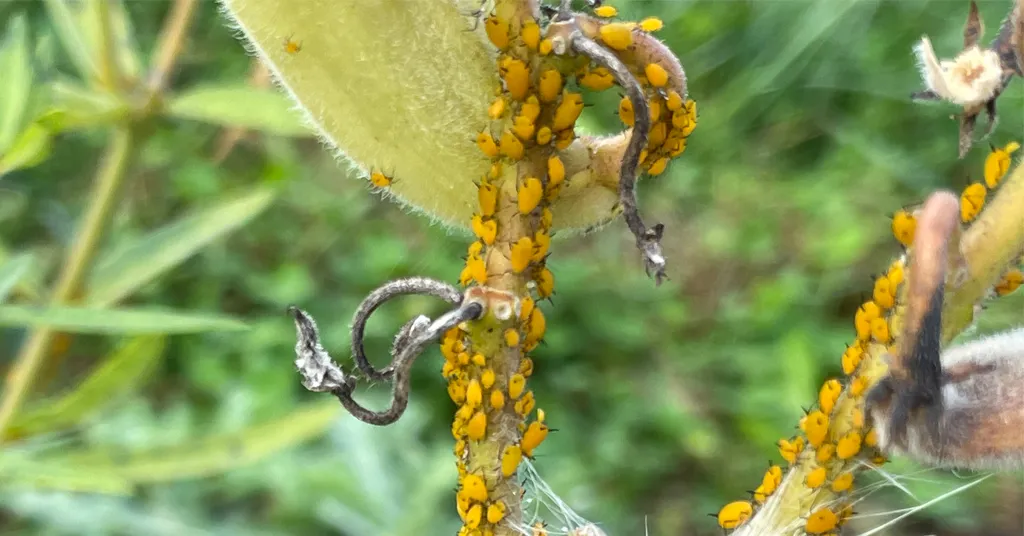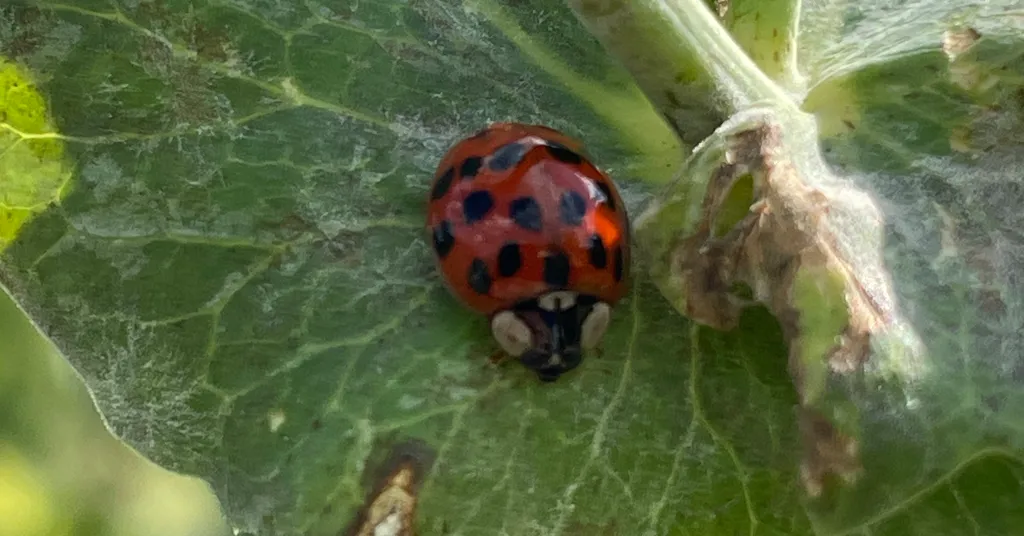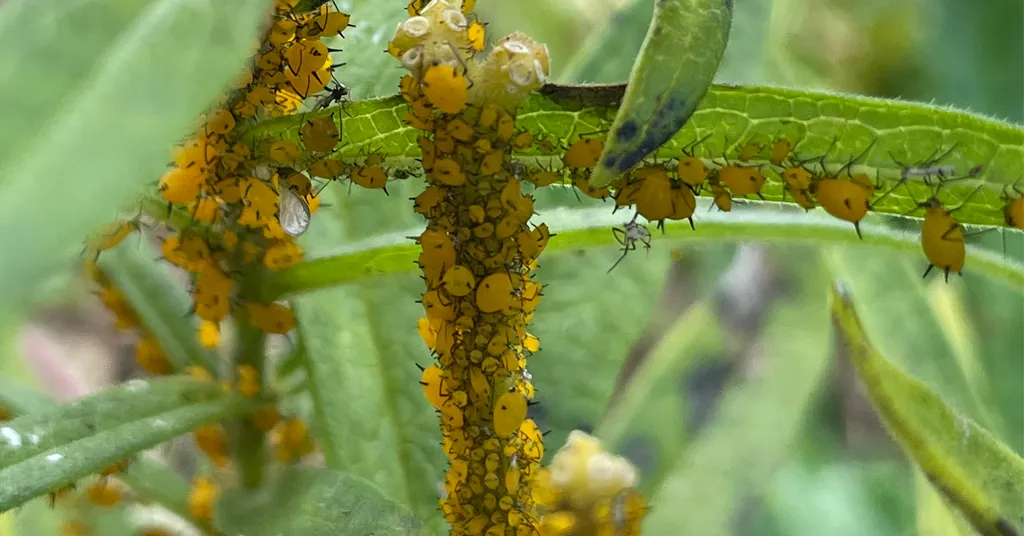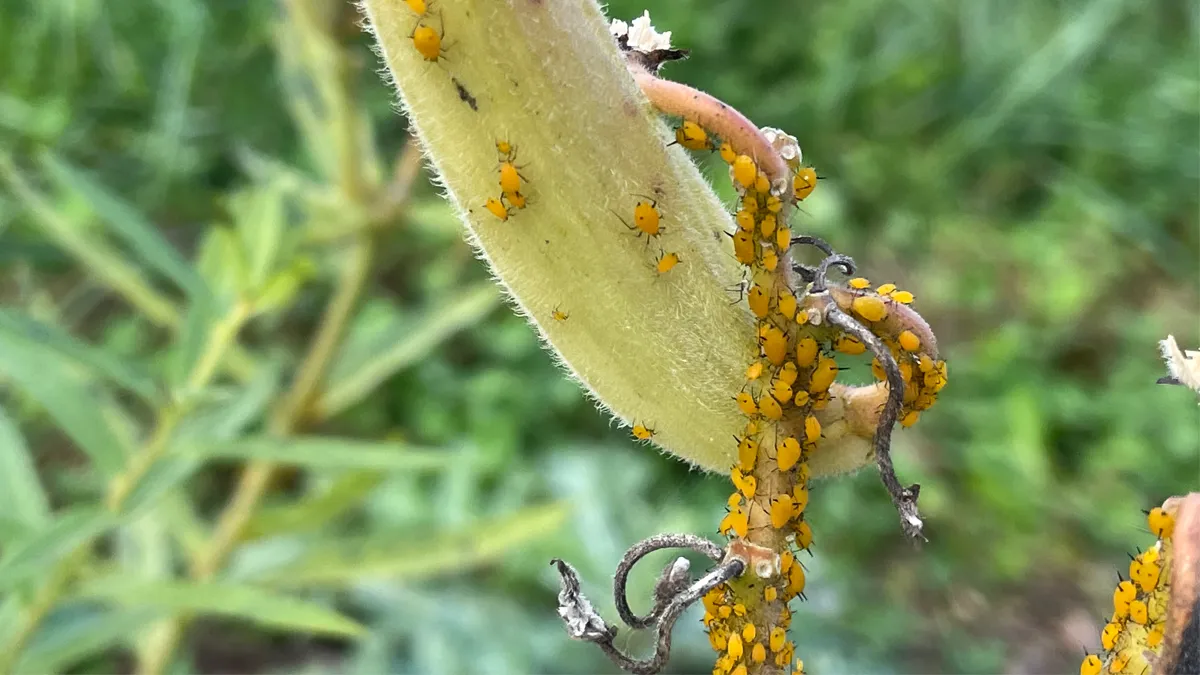This post may contain affiliate links. When you purchase through links on my site, I may earn a commission at no cost to you. See my Privacy Policy for details.
Aphids, also known as plant lice, are small, sap-sucking insects that belong to the superfamily Aphidoidea. They are one of the most common pests found in gardens and agricultural fields around the world. These tiny insects can cause significant damage to plants by feeding on their sap, which can lead to stunted growth, yellowing of leaves, and the transmission of plant diseases. Let’s look at the different types of aphids, their lifecycle, the damage they can cause, and how to control and prevent infestations.
Types of Aphids
There are over 4,000 species of aphids, each with its own unique characteristics and preferences. Some common types of aphids include the green peach aphid, the cotton aphid, the melon aphid, and the cabbage aphid. Each of these species has a specific host range and can cause damage to a variety of plants.

Lifecycle of Aphids
Aphids have a complex lifecycle that includes both sexual and asexual reproduction. In the spring, female aphids give birth to live young without the need for mating. These young aphids, known as nymphs, mature quickly and begin reproducing asexually, giving birth to more nymphs. This rapid reproduction can lead to explosive population growth, especially in favorable conditions.
Identifying Aphids
Before you can effectively deal with aphids, you need to be able to identify them. Aphids are small, pear-shaped insects that can be green, yellow, brown, or black. They are usually found on the undersides of leaves or the stems of plants. Aphids reproduce quickly, so it’s important to act fast if you notice them in your garden.
Damage Caused by Aphids
Aphids can cause damage to plants in several ways. They feed on the sap of plants, which can lead to stunted growth, distorted leaves, and reduced yields. Aphids also secrete a sticky substance called honeydew, which can attract ants and promote the growth of sooty mold. In addition, aphids can transmit plant diseases, such as viruses, from plant to plant as they feed.
Signs of Aphid Infestation
There are several signs that your plants may be infested with aphids. These include:
- Curling or yellowing of leaves
- Stunted growth
- The presence of sticky honeydew on leaves
- The presence of ants on plants
- Distorted or twisted new growth
Aphid Control
Natural Remedies for Aphid Control
Several natural methods can be used for aphid control in the garden. These include:
- Introducing natural predators, such as ladybugs, lacewings, and parasitic wasps
- Spraying plants with a strong stream of water to dislodge aphids
- Planting companion plants that repel aphids, such as marigolds, chives, and garlic

Organic Aphid Control
If natural remedies are not effective, you may need to use organic insecticides to control aphids. These insecticides are derived from natural sources and are safe to use in your garden. Look for insecticidal soaps or neem oil, which can be effective in killing aphids without harming beneficial insects.
Chemical Aphid Control
In severe cases, chemical control methods may be necessary to control aphid populations. However, it is important to use these methods carefully and only as a last resort. Some common chemical insecticides used to control aphids include pyrethroids, organophosphates, and carbamates.
Preventing Aphid Infestations
Preventing aphid infestations is key to protecting your plants from damage. Some ways to prevent aphid infestations include:
- Regularly inspecting plants for signs of aphids
- Removing weeds, which can serve as host plants for aphids
- Planting a diverse range of plant species to attract natural predators
- Avoiding over-fertilizing plants, as this can attract aphids

Common Questions About Aphids
What are aphids?
Aphids are small, sap-sucking insects that feed on the sap of plants.
How do aphids reproduce?
Aphids reproduce both sexually and asexually, with females giving birth to live young without mating.
What plants are most susceptible to aphid infestations?
Aphids can infest a wide range of plants, but they are most commonly found on roses, fruit trees, vegetables, and ornamental plants.
How can I tell if my plants have aphids?
Look for signs such as curled or yellowing leaves, sticky honeydew on leaves, and the presence of ants on plants.
What can I do to prevent aphids from infesting my plants?
Prevent aphids by regularly inspecting plants, removing weeds, planting companion plants, and avoiding over-fertilizing.
Aphids are a common pest that can cause significant damage to plants. By understanding their lifecycle, the damage they can cause, and how to control and prevent infestations, you can protect your plants and ensure a healthy garden.

